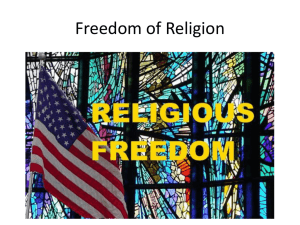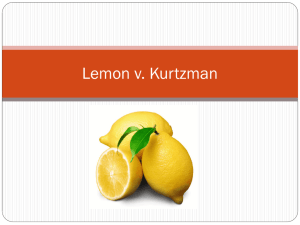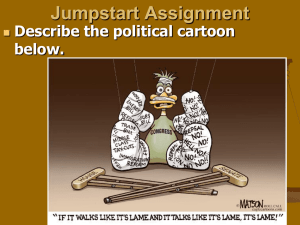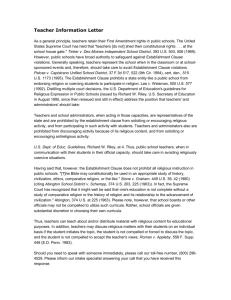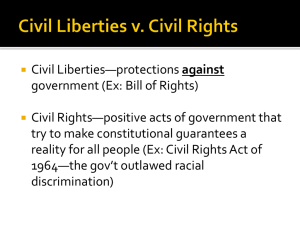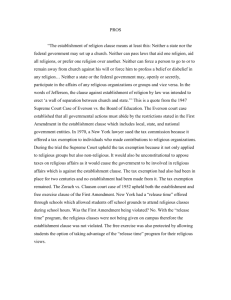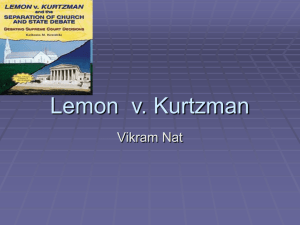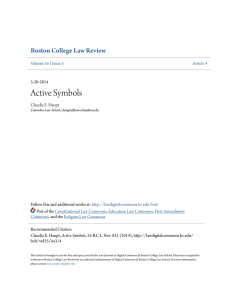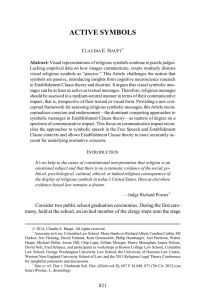Freedom of Religion - Currituck County Schools
advertisement
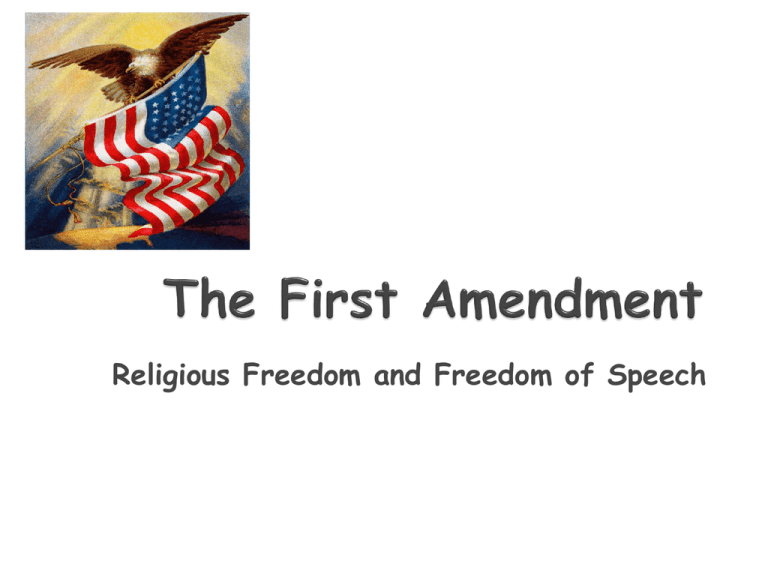
Religious Freedom and Freedom of Speech If the picture arouses a very negative emotion, stand at the -5. Stand in between -5 and 0 for lesser degrees of negative feelings. If the symbol arouses no emotion, stand at the 0. If the picture arouses a very positive emotion, stand at the +5. Stand in between 0 and +5 for lesser degrees of positive feelings. Yin & Yang Daoism Christmas Tree Christianity Crescent Moon & Star Islam Dradle Judais m Ganesh Hinduis m Menorah Judaism Nativity Scene Christianity Star of David Judaism Crucifix Christianit y 10 Commandments Judaism & Christianity How did you feel viewing these symbols? Did any of them offend you? Why or why not? When and where might you expect to see these symbols? Where might a “strange” place be to see these symbols? If you saw these symbols placed together at Maple Park, would that upset you? Why or why not? Would that violate “separation of church & state?” “Congress shall make no law respecting an establishment of religion, or ◦ The Establishment Clause ◦ What does this mean? Why was this right included in the BOR? From where do we get the phrase “separation of church & state?” How has this right encouraged religious diversity? Is that a good thing or a bad thing? Discuss! Who interprets the law? How did this right get applied to the states? Discuss incorporation. How does the SCOTUS decide if a violation exists? Discuss the Lemon test and examples from homework. prohibiting the free exercise thereof.” ◦ The Free Exercise Clause ◦ What does this mean? How is this different from the Establishment clause? Why was this included in the BOR? Who interprets the law? How does the SCOTUS decide if a violation exists? Discuss the Neutrality test and examples from homework. Watch the video. Complete the assignment for p. 37 of notebook. Arguments for Lynch (Pawtucket)? Arguments for Donnelly (ACLU)? Your decision? SCOTUS Decision In a 5-to-4 decision, the Court held that notwithstanding the religious significance of the crèche, the city had not violated the Establishment Clause. The Court found that the display, viewed in the context of the holiday season, was not a purposeful or surreptitious effort to advocate a particular religious message. The Court found that the display merely depicted the historical origins of the Holiday and had "legitimate secular purposes." The Court held that the symbols posed no danger of establishing a state church and that it was "far too late in the day to impose a crabbed reading of the [Establishment] Clause on the country." Source: The Oyez Project, Lynch v. Donnelly, 465 U.S. 668 (1984) available at: (http://oyez.org/cases/1980-1989/1983/1983_82_1256) (last visited Wednesday, July 29, 2009). Read lesson 29 in the WHITE WTP book or online on my website under the assignments list as a .pdf file. Complete the assignment for p. 38 of your notebook. Due tomorrow!
